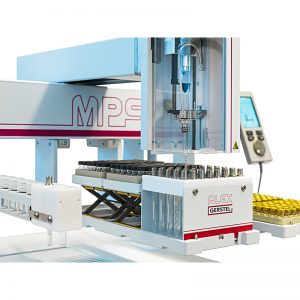Fruit and vegetable extracts that are produced following the well established QuEChERS method [1,2] typically contain a significant amount of involatile matrix material. After several injections of such extracts into the GC, sufficient matrix residue will be present in the GC inlet liner to lower or sometimes even increase the response of certain pesticide compounds affecting the accuracy of the analysis. The performance can be restored by exchanging the GC inlet liner. Normally this has to be done manually which means stopping the analysis sequence. The GERSTEL Automated Liner Exchange system (ALEX) provides an automated solution. As this study shows, automated liner exchange restores the original performance of the GC system and is therefore generally useful for the analysis of extracts that contain involatile matrix residue.
- Home
- About Us
- Products
- Automated Sample Preparation
- Advanced Analysis Technique
- Ion Chromatography
- Particle Size & Shape
- Zeta Potential Analyzer
- Surface Chemistry
- Spectroscopy
- Powder Characteristic
- Stability
- Elemental Analyzer – Combustion
- Ultrapure Water System
- Centrifuge
- Washer Disinfectors & Cleaners
- Microwave Digestion System
- 3D Electronic Printing
- LabAlliance Instruments
- Services
- Application
- Contact Us
- Home
- About Us
- Products
- Automated Sample Preparation
- Advanced Analysis Technique
- Ion Chromatography
- Particle Size & Shape
- Zeta Potential Analyzer
- Surface Chemistry
- Spectroscopy
- Powder Characteristic
- Stability
- Elemental Analyzer – Combustion
- Ultrapure Water System
- Centrifuge
- Washer Disinfectors & Cleaners
- Microwave Digestion System
- 3D Electronic Printing
- LabAlliance Instruments
- Services
- Application
- Contact Us
GERSTEL Automated Liner Exchange (ALEX) and its Benefits in GC Pesticide Analysis
You are here:
- Home
- Lab Application
- GERSTEL Automated Liner Exchange (ALEX)…



